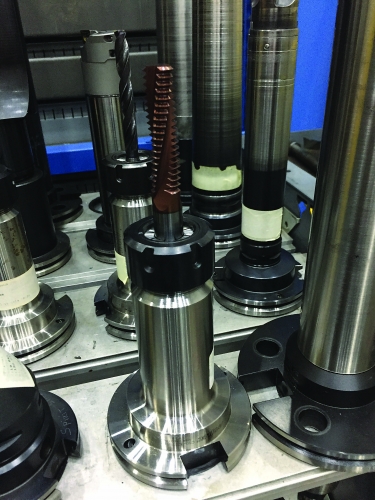When tapping on a conventional machine, a machinist constantly adjusts to sights and sounds, and this ability to closely interact with the tapping operation allows a lot of leeway in tap selection. With conventional machines, it was common for us to apply inexpensive hand taps for everything, including power tapping. Tapping on a machining center prevents a machinist from being actively engaged in the process and removes the ability to use his senses for guidance while the tap is in the hole.
With a machining center, a machinist can’t stop in the middle of a tapping operation when something sounds or feels wrong. You know that something is incorrect only after a tap is broken or threads are bad. Having the correct tap geometry is critical when tapping on a machining center. There is no time to react to a poor situation caused by using the wrong tool. I learned fast that taps have features designed for specific applications. Using a tap in an application for which it was not designed yielded lousy results and frustration.
Holding and driving taps on conventional machines was done using collets, drill chucks, tap wrenches (held by hand) and, in the crudest setups, adjustable wrenches.
When I purchased the machining center, I bought the rigid tapping option, which is intended to eliminate the need for special toolholders. So I tried to hold tools on the machining center like I had on conventional machines. I was met with frustrating results. My first attempt used a 3-jaw keyed drill chuck. After failing to thread a hole with a
3⁄8-16 tap on three consecutive tries, I knew that other methods were needed.
Thread milling is the first choice for threadmaking at Mitsubishi Hitachi Power Systems Americas. Making threads that have a large depth-to-diameter ratio can be much easier with a thread mill than with a tap. Image courtesy of C. Tate
The second setup incorporated a standard double-angle collet, which worked much better until the tap started to wear, increasing cutting forces to the point that the tap began to slip in the collet. The result was poor thread quality and a grimace as I wondered how much of the tap was going to exit the hole. I tried a few other methods and finally found relief when my tap salesman suggested I use a tension compression holder.
Tension compression holders are spring-loaded and allow axial movement of the tap, which mitigates undesirable effects associated with tap movement. These holders also are designed specifically for holding taps, so they don’t have issues with movement in the collet. Technically, a tension compression holder is not needed for rigid tapping. However, the holder does protect against small inaccuracies in the system. Because the holders are easy to use and one size accepts a variety of tap sizes, I started using them all the time.
Read more: The difficulties of tapping





